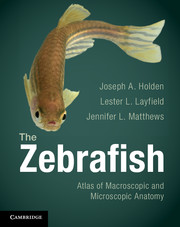Book contents
- Frontmatter
- Contents
- Preface
- Acknowledgments
- Chapter 1 Introduction
- Chapter 2 Cross section and longitudinal section atlas
- Chapter 3 Integument (skin)
- Chapter 4 Digestive system
- Chapter 5 Respiratory system
- Chapter 6 Circulatory system
- Chapter 7 Liver and gallbladder
- Chapter 8 Pancreas
- Chapter 9 Endocrine organs
- Chapter 10 Kidney
- Chapter 11 Reproductive system
- Chapter 12 Sensory systems
- Chapter 13 Central nervous system
- Chapter 14 Miscellaneous structures
- Chapter 15 Musculoskeletal system
- Index
Preface
Published online by Cambridge University Press: 05 February 2013
- Frontmatter
- Contents
- Preface
- Acknowledgments
- Chapter 1 Introduction
- Chapter 2 Cross section and longitudinal section atlas
- Chapter 3 Integument (skin)
- Chapter 4 Digestive system
- Chapter 5 Respiratory system
- Chapter 6 Circulatory system
- Chapter 7 Liver and gallbladder
- Chapter 8 Pancreas
- Chapter 9 Endocrine organs
- Chapter 10 Kidney
- Chapter 11 Reproductive system
- Chapter 12 Sensory systems
- Chapter 13 Central nervous system
- Chapter 14 Miscellaneous structures
- Chapter 15 Musculoskeletal system
- Index
Summary
Preface
The present atlas is designed to aid basic and translational scientists who require a fundamental understanding of zebrafish macro- and micro-anatomy. Many investigators with interests in the molecular features of oncogenesis or molecular genetics and organ development have found zebrafish to be a valuable animal model for their studies. However, these investigators often lack basic training in the fundamentals of fish histology and anatomy. This book is intended to address that gap.
The present atlas makes use of H&E stained longitudinal and cross sections to demonstrate the macro- and micro-anatomy of the zebrafish. Unlike many other atlases, all the photographs in the present book are obtained from zebrafish. This is important because many species of bony fishes show considerable anatomic variation. While some bony fishes possess a tongue and a true stomach, these are absent in zebrafish resulting in significant anatomic differences. The text concentrates on elucidating the actual microscopic appearance of zebrafish. An initial chapter uses longitudinal and cross sections photographed at low or no magnification to illustrate the relationships of zebrafish anatomy. Later chapters follow an organ systems approach in which the histology at both low and high power is addressed in detail. It is hoped that this combined approach will allow investigators to quickly and accurately identify specific organs and tissues involved by neoplasms or developmental abnormalities induced by molecular genetic changes. To this end, the text accompanying the photomicrographs has been made relatively brief while a large number of photomicrographs have been included. The photomicrographs have been generously labeled for easy identification of structures within the tissue sections. Correlation of photomicrographs present in the organ-based chapters with those present in the orientation chapter should allow rapid identification of tissue structures observed in study preparations.
- Type
- Chapter
- Information
- The ZebrafishAtlas of Macroscopic and Microscopic Anatomy, pp. viiPublisher: Cambridge University PressPrint publication year: 2013



